We don't have unexpected visitors very often in our neck of the woods, so when a neighbor pulled up the other evening I was sure I'd accidentally done something un-neighborly (Sophie has taken to patroling/barking at 4am every night recently) and was about to get a talking to. Instead, I was asked if he could have permission to take pictures of a flower at the front of our property. He told me that this flower is very rare and only found in our area. In fact, there are quite a few rare and endangered plants that grow in area, referred to as the Cedar Glades. One of these we just happen to have at the front of our property along the road's edge. This was all news to me and pretty exciting news at that! It was already evening, too late to go down and take a look for myself, so I did a bit of googling...
According to The Center for Cedar Glade Study, "Cedar glades are an endangered ecosystem many of which have been destroyed or severely impacted by humans. Globally unique, they are extremely fragile habitats found primarily in Middle Tennessee and a few other localities in southeastern United States. They have been viewed historically as wastelands and yet they support a plant community of highly specialized species, many of which are found nowhere else in the world."
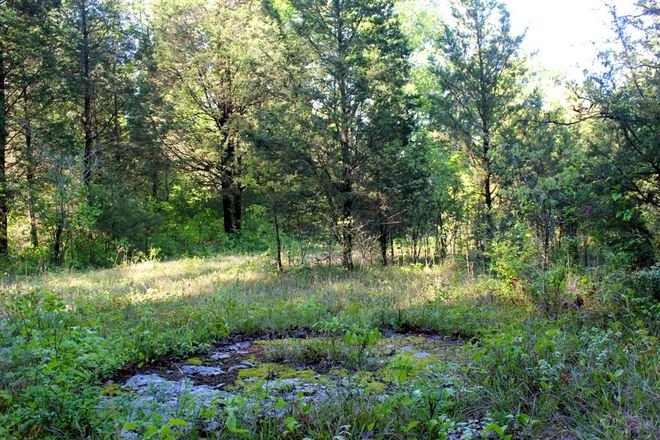 The "wasteland" part rung a bell. When we walked the property in the winter and early spring the front "pastures" looked like an old building site with gravely patches, exposed rocks, and scraggly dry looking plants making up the majority of the landscape. It seemed a little forlorn, but as the warmer weather moved in, it came alive with a savage beauty that reminded me a bit of the desert in New Mexico, where Scrapple was born. Bright bursts of wildflowers recently started to emerge and tufts of mosses, dozens of shades of green, now mosaic the ground.
The "wasteland" part rung a bell. When we walked the property in the winter and early spring the front "pastures" looked like an old building site with gravely patches, exposed rocks, and scraggly dry looking plants making up the majority of the landscape. It seemed a little forlorn, but as the warmer weather moved in, it came alive with a savage beauty that reminded me a bit of the desert in New Mexico, where Scrapple was born. Bright bursts of wildflowers recently started to emerge and tufts of mosses, dozens of shades of green, now mosaic the ground.
The next day I went for a little discovery walk and this is what I found...
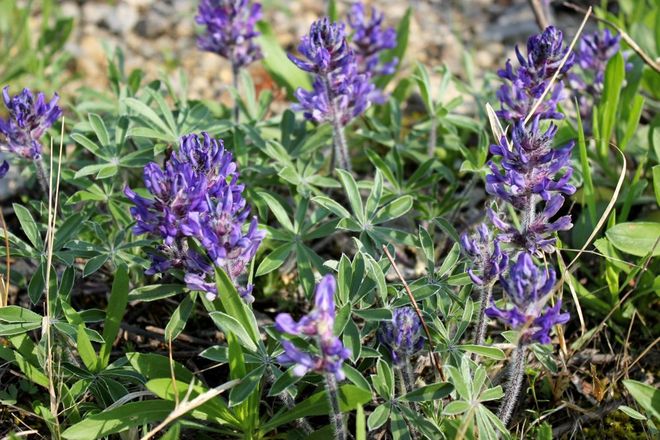 Nashville Breadroot, found only in our area
Nashville Breadroot, found only in our area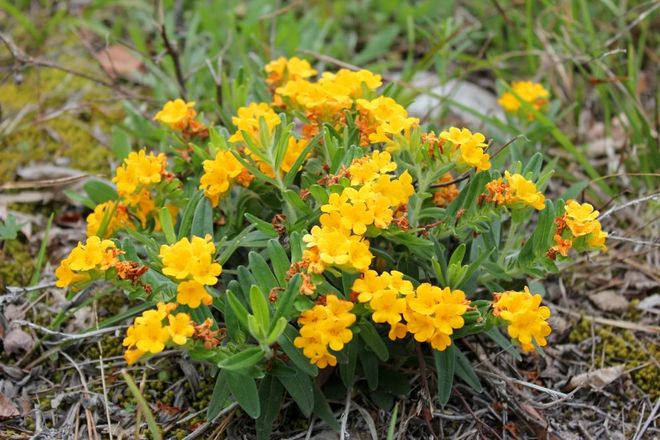 Hoary Puccoon
Hoary Puccoon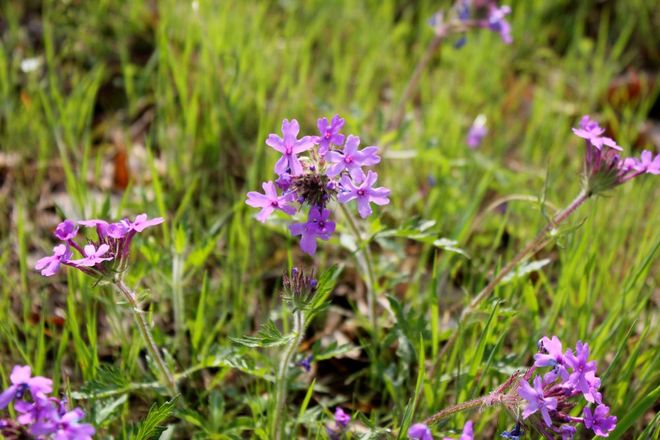 Rose Vervain or Rose Verbena
Rose Vervain or Rose Verbena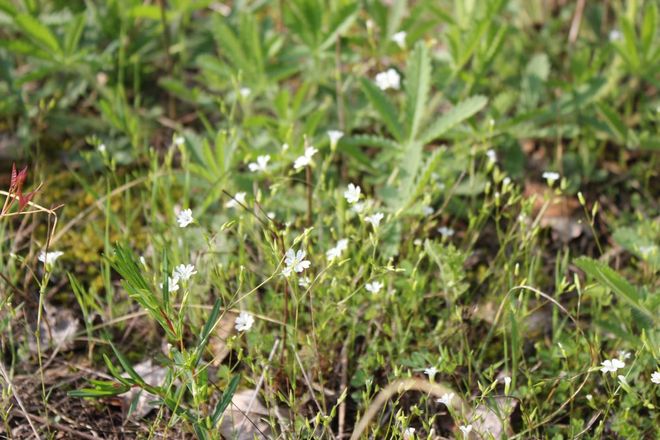 Cleft or Glade Phlox
Cleft or Glade Phlox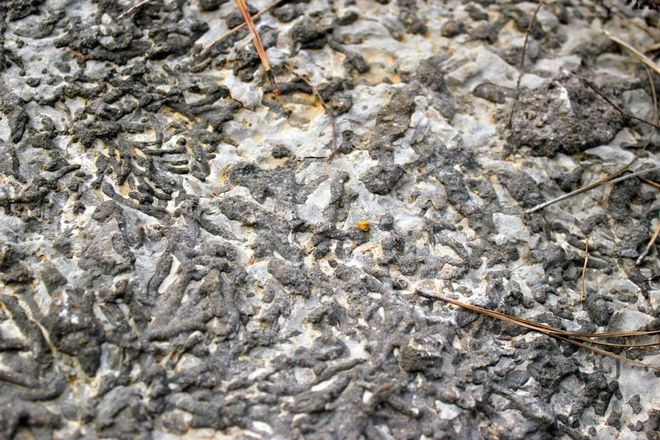 one of the many patterned limestone slabs scattered around our glades
one of the many patterned limestone slabs scattered around our glades
Pretty cool stuff! At least our 84 acres of the glades can rest assured that we won't subdivide it or destroy the endangered ecosystem. We are even in talks with the National Resources Conservation Service (NRCS) to set aside a portion for preservation and study.



